| | |  | | |  | 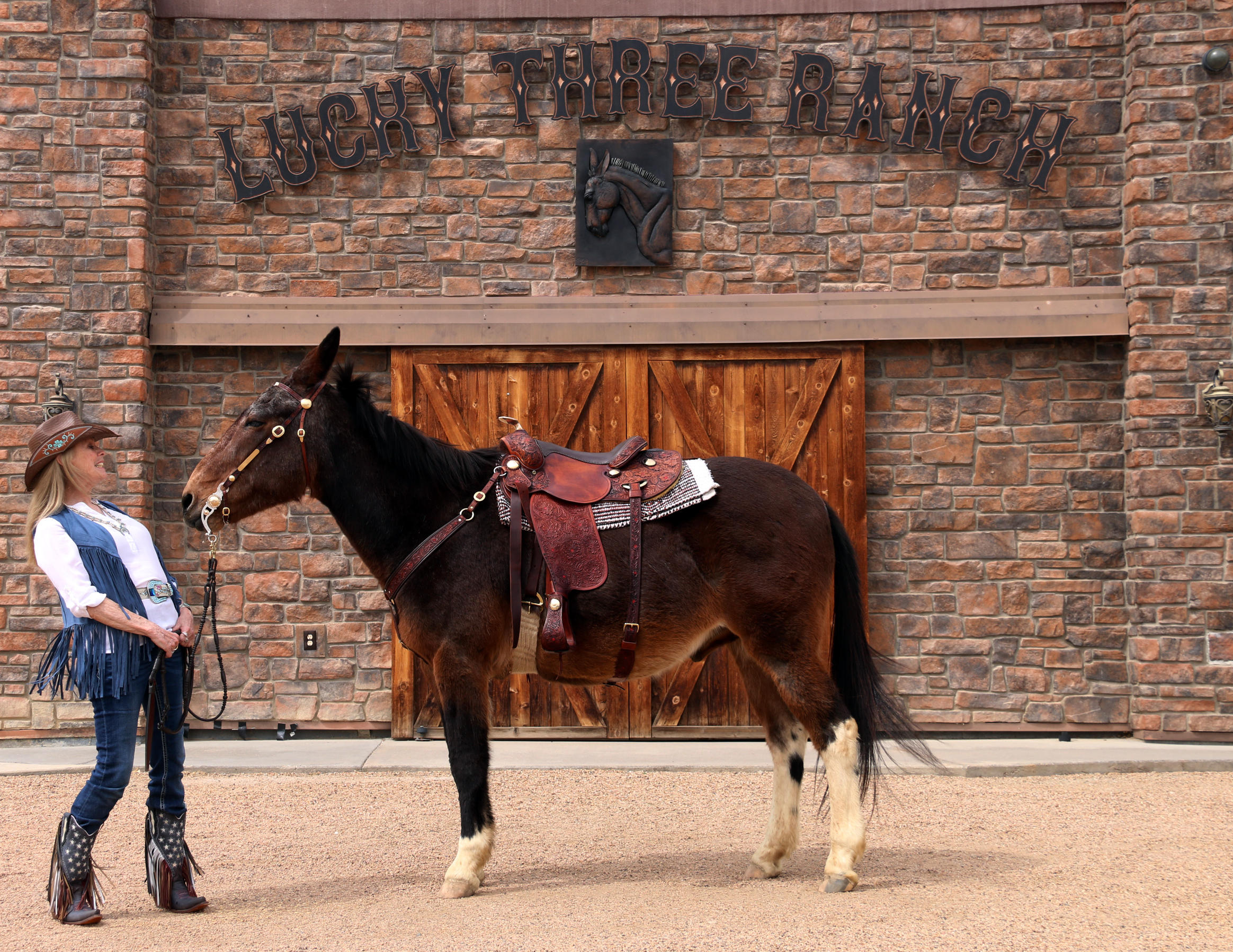 It seems that life is always trying to seek “balance.” Balance comes in a variety of forms and it seems there has been far too much negative balance in the world these days! We are very fortunate with our Longeared-companions that we are able to offset this negativity so easily...with just a visit to the barn! If you don’t have the time to ride, even just a grooming session, or a quick visitation, can greatly improve one’s state of mind. Our animals seem to know when we are down and do their level best to help change it....or at the very least, make us laugh with their antics. Longears are exceptionally good at pulling humbling stunts that help us to reassess our position! It seems that life is always trying to seek “balance.” Balance comes in a variety of forms and it seems there has been far too much negative balance in the world these days! We are very fortunate with our Longeared-companions that we are able to offset this negativity so easily...with just a visit to the barn! If you don’t have the time to ride, even just a grooming session, or a quick visitation, can greatly improve one’s state of mind. Our animals seem to know when we are down and do their level best to help change it....or at the very least, make us laugh with their antics. Longears are exceptionally good at pulling humbling stunts that help us to reassess our position!
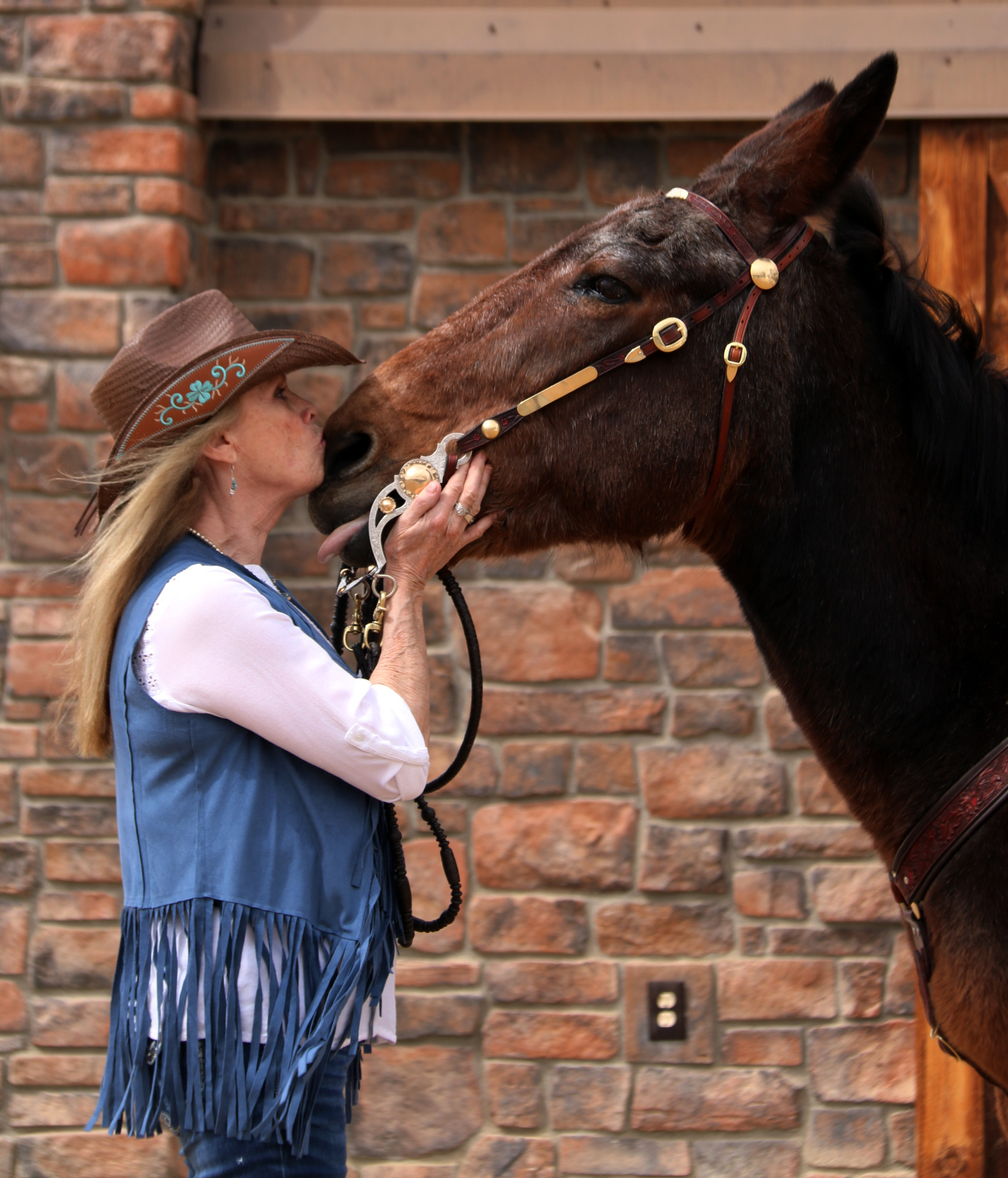 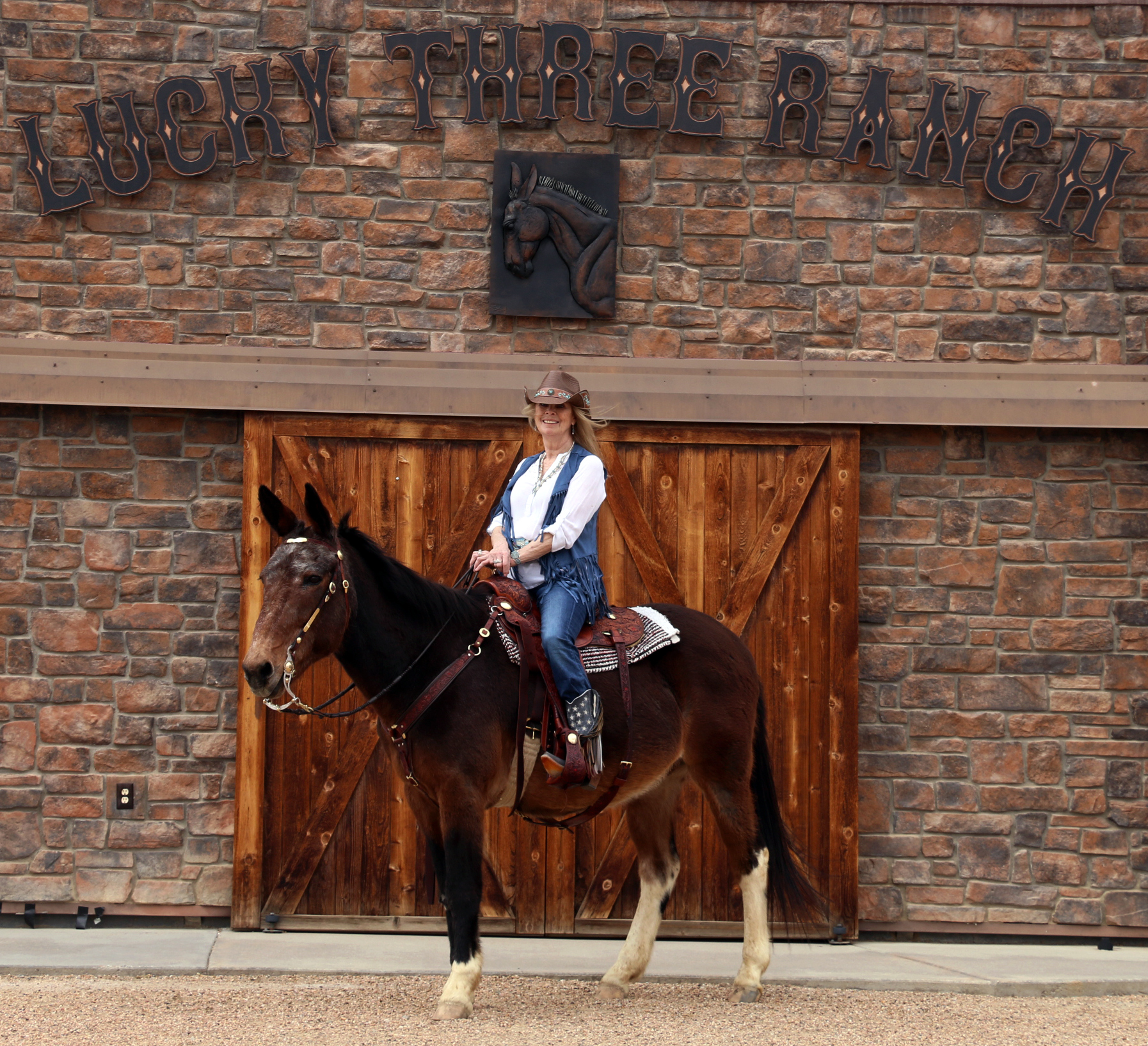
Lucky Three Sir Lancelot (now 28 years old) was not exactly enthusiastic about posing for a picture, so he went to sleep...LOL! Once you learn to keep your sense of humor, and not take things personally, Longears can be quite entertaining and free one from tension!
Since purchasing an additional 5 acres to bring the total Lucky Three acreage to 132 ½ acres, we have been disputing a plethora of issues with the City of Loveland, and the County and the State of Colorado. All we wanted to do was to tear down the existing OLD buildings and put up a Modular Home for my Ranch Manager and his family. It was much easier said than done. We closed on the property on July 31st, 2021 and 10 months later, we are still waiting for the permit to build the house! At least we were able to get the shop building put up, but even that isn’t completed today! That is a lot of stress to say the least...on top on my regular jobs of responding to communication from all my followers, working on another documentary...and book, and the list goes on! I didn’t really have enough time to actually go for a ride, so I explained it to Lance and he finally woke up and conceded to pose nicely for the picture I was trying to get! He made my day! What a good boy!
Winter passed quickly and spring was here, and then gone in a flash! I did notice, however, that things seemed to be about a month behind. The snow we expected in January and February did not come until the first week in March and went away quickly! April was filled with windy gales and it looked like we were headed for drought! The hayfields were staying pretty dry and brown. Finally, May came in with a few decent rainstorms and the hay began to grow. The park south of the house and the leaves on all the trees are finally turning green! Our new documentary, Lucky Three Hay Production, is staying on schedule and looking great! Despite all the negativity, like blowing water lines, failing internet, ornery computers, and slowed construction among other things, the BAD is still in balance with the good! We have lots of surprises in store for all of you coming soon this summer! We’ll keep our focus on the GOOD things in life and the bad won’t be as depressing...we’ll just keep moving forward! So, My Friends, try to look on the bright side, “Keep Your Traces Tight” and “Always kiss your ass goodnight!”
Best wishes and Happy Trails,

| | |
|  | |
|
|  | |
|  | |  | |
|  | |  |
| |  | | ASK MEREDITH A QUESTION | | | Have a question for Meredith or want to give us feedback? | |
|  | |
| |
| |  | |  | | LTR Training Tip #7 | | Feeding Time: The Pasture
| | Meredith gets a lot of letters and emails from people with training questions about their equines. Here, she discusses how to best utilize pasture time for a happy and healthy equine.
View many more training tips on our YouTube channel.
| | |
|
|  | |
| |
|  | 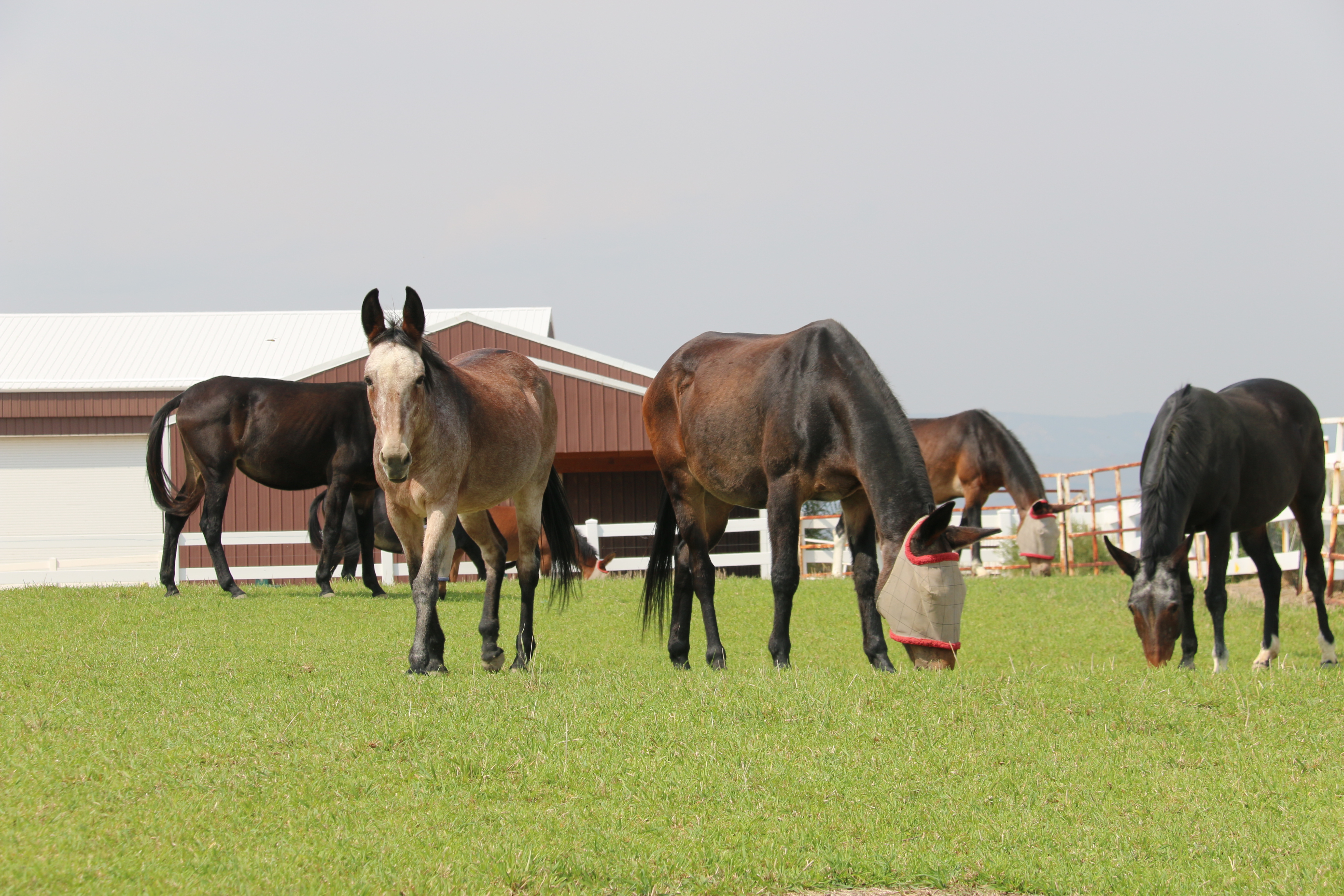 | | TRAINING QUESTION | | Question: May I ask a couple of simple questions concerning the Ivermectin? I have tried to find the research for the claims being made by others and I cannot find any. Mendeley is where 99% of the scientific papers are published. My daughter that is a research scientist at Texas A&M is also trying to find the research and failing to find it.
I agree with you. I at one time had 24 horses, used Ivermectin. I treated every two months.
In November I would usually change to something else. I did not use anything for the herd until April. I did look for eggs etc. My wife was a high school science teacher and used this as part of her class work. She also had the kids bring samples from the horses for comparison.
My daughter is in Texas A&M. and currently working with the FDA feedlot and other feedlots on the effects of Ivermectin on cattle in confined areas. She is pulling fecal samples today they started with the fresh new cattle at 2 AM and should be done by 3 PM, then she has to go back to the lab and do some processing. She will finish the stabilizing at about 7 PM this evening. While this makes for a long day for her she loves it. Then in 21 days they will pull the samples again to see what parasites remain, egg count etc. This is on 1000 head of feeder calves.
What you find is the same as what I find.
Answer:
We worm our equines in January, March, May, July and September with Farnam Ivermectin and then break the cycle with Strongid in November to prevent internal worms and parasites. This ensures that your animals are safe despite what your neighbors may be doing with their livestock. Fields and pastures should be harrowed in the spring and fall, and between hay cuttings. Keep all tack and equipment clean so it does not attract flies to your tack room and grooming area. Spray the tack room when you leave with a household flying insect spray for any residual flies.
1) First and foremost, a regular grooming schedule at least every other week and preferably every week is essential for the hygiene and health of your equines. Regular grooming once a week to remove excess hair, mud, etc. will eliminate places on the animal, including legs that would be subject to insects laying eggs. If certain body areas begin to get sores, scabs, or bumps, use Neosporin, or if they are severe...Panalog, also called Animax or Dermalone (by prescription from your vet). Clean the eyes, ears and nostrils every time during grooming and fly spray the hairs inside the ears for the best bug-block after cleaning.
2) We use Tri-Tech 14 by Farnam fly spray weekly for bugs and insects that can pester your equine. This seems to be the best and longest-lasting spray (Herbal remedies and fly predators do not work as well!). Scrub flies and eggs from the legs, cover with Neosporin and then spray for flies during grooming. Using Johnson’s baby oil in the manes and tails helps to keep the flies at bay and will also discourage other animals from chewing on them.
3) Use fly masks for those mules and donkeys that have sensitive skin. Farnam Super Masks will usually fit most animals. If you groom regularly and clean and spray the ear hairs, the eared masks may not be necessary (I have never had to use the ones with ears). You can find them in most tack and vet stores. Just make sure when you put them on that they will come off easily if they were to get caught on anything.
4) Mules will usually not fully shed out until July and donkeys will go as long as August. Their hair coats are designed to insulate them from heat and cold and protect them from insects and bugs. Using all these hygienic livestock and land management practices I have never needed to use fly masks on my donkeys and horses. I have only needed to use them on about 30% of those mules that have sensitive skin around the eyes and are prone to sunburn.
5) Feed the right kinds of feed to mules and donkeys. Animals that are sweating toxins are more apt to attract insects.
6) In order to keep flies and other insects under control; all stalls, runs and pens need to be kept free of manure and debris daily. Barns should be cleaned periodically with disinfectant. Keep all stalls, pens and sheds free of urine and manure (clean at least once a day, every day!). This includes larger dirt pen turnout areas weekly. You shouldn’t need to use any PDZ or chemicals at all if cleaned properly. For good drainage in stalls, we drill a 2’ x 4’ deep hole in the middle of the stall and fill it with 1 ½” rock. Then we put down 4” of pea gravel throughout the whole stall and cover with rubber mats.
7) Keep manure collection piles well away from the house and barns (We put manure into a dumpster behind our hay barn and have it hauled away weekly). Contrary to popular belief, the manure is NOT suitable for fertilizer unless it is properly composted and used for appropriate crops. Equines consume weeds and poop seeds that will propagate weeds anywhere that the manure is used. It also provides a breeding place for parasites.
8) Keep water sources clean. Check them daily or clean as needed.
9) Clean any manure from shed or stall walls daily. Power wash stall walls and alleyways as needed.
10) Ceiling fans will also help a lot, both pointed into specific stalls and along the top of your barn alleyways! Just be sure to check them regularly and clean them as needed to prevent spontaneous fires from dust gathering in them. Keep them running so birds will not build nests on them!
11) Do not ever clip the hair inside the ears or muzzle hairs of the equines! Body clip only if you are showing. Use blankets and fly sheets as needed. Their hair coats will insulate them from the heat, cold and protect them from insects.
| | |
|  | | | 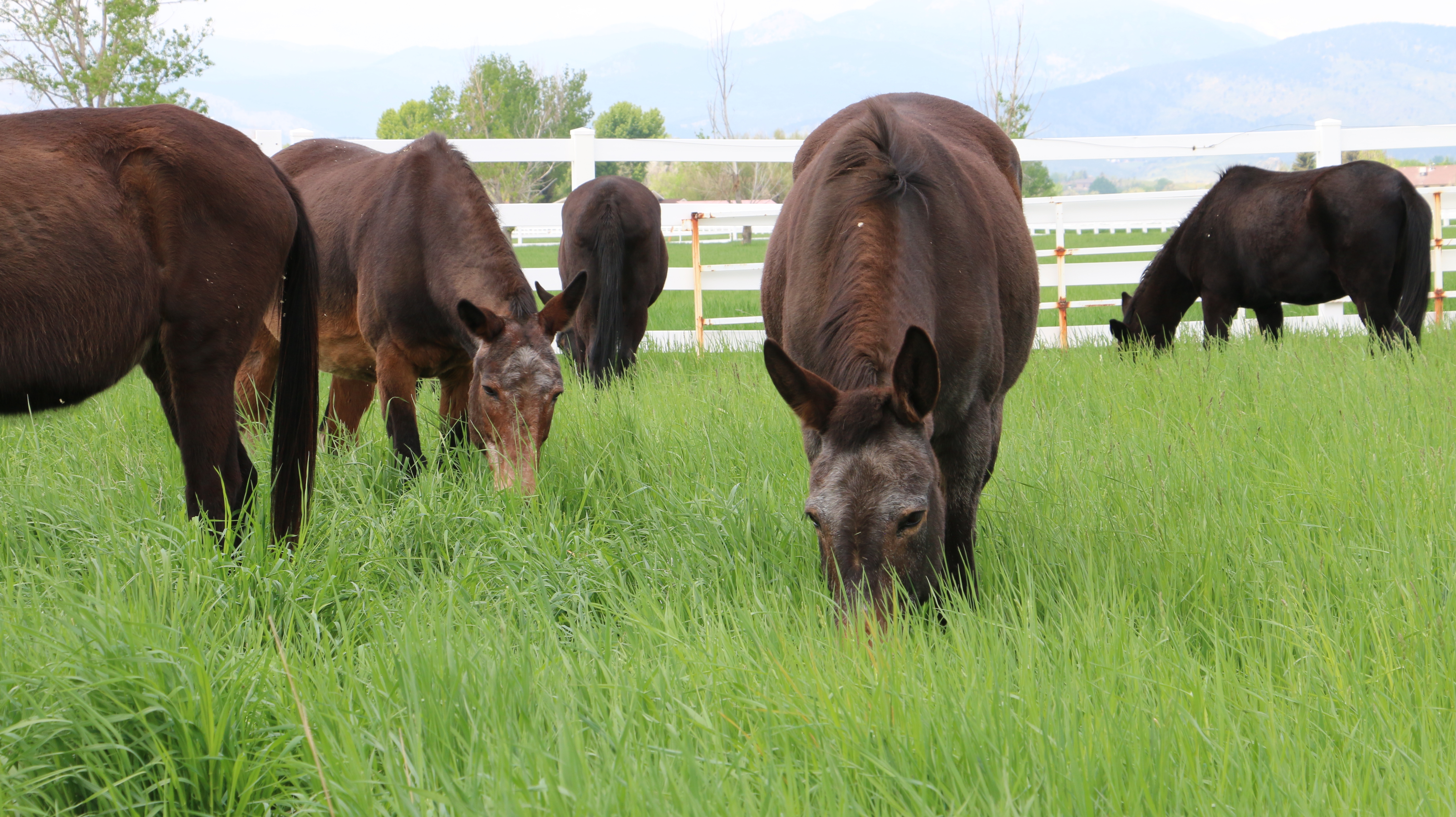 | |
TRAINING QUESTION CONT.
12) Do not clip the hair on the legs or body clip unless you absolutely must for showing! Lots of times, you can get a clean look by using the clippers with the hair rather than against the hair on the legs to maintain protection. If you do body clip, be sure to use appropriate blankets and sheets for warmth and insect protection. To keep the clipped hair from growing back in the winter and early spring, keep the barn lit for summer hours.
13) Keeping your fence lines free of weeds will also help enormously! Bugs and insects like to live in those areas!
14) We do not allow the equines to graze on the hay fields and we regularly harrow, aerate and even pick up manure in their turnout areas. Parasites need a host where they can thrive and good hygiene practices with both equines and land will minimize their ability to survive.
I have been doing more research about Ivermectin and I still cannot find anything to validate what a lot of the people were saying on Facebook. Although I posted this entire livestock and land management approach, I noticed that most comments were focused only on the worming schedule. If you do not manage the environment along with the equines, you will have a higher presence of parasites, and those that are there can build up immunity to Ivermectin. When the parasites are hardly present at all, they will not react the same way as a higher infestation does.
We do not graze our animals on the hayfields. We harrow, aerate and rotate the animals in the turnout pastures regularly, and our manure is kept in a dumpster and is taken off site every week. All the pastures, including the hayfields, are regularly sprayed with animal-friendly fertilizer and weed killer. We do not have a lot of trees in the turnout areas. Rather, we have turnout sheds that are not large and are not conducive to the birds building nests and dropping things in those areas. The barns and pens are cleaned daily and we have nearly no birds at all in the barns because of the fans. We do not use fly predators, or introduce those kinds of things to our “clean” environment.
We do not have to use fly masks or “socks” on the legs of our animals. We have only needed fly masks on those equines that have sensitive skin around the eyes and are prone to sunburn. Regular grooming practices keep the incidence of bites in the ears to a minimum, and when treated with Neosporin, they seldom return. I have never needed to use fly masks on my donkeys or horses. I have not needed to use fly masks with ear protectors either. It seems that in addition to the Farnam Tri-Tech 14, the clean environment keeps the intensity of the fly and insect population to a bare minimum
Using the Ivermectin every other month does seem to do much more than just take care of the worms; it affects other parasites as well. It is very important to follow good hygiene and proper land management as a whole to get the full effect of the control of parasites in our equines and their environment. As I suspected, the consistent results can be observed in my equines, and the equines belonging to the people who follow my protocol. Books and lab research are helpful, but not without the benefits of real life experience in practical application of that knowledge. I combined and applied what I have learned in college (For my Psychiatric Technician’s License & Animal Sciences at C.S.U.), research papers, professional veterinarian consultations and books with the field study of my own 32 equines over a period of 40+ years to come to my conclusions. There is a lot of researched information to validate the success of my program. The ultimate result is the consistent health and welfare of my equines as they age. Visitations from my veterinarian are rare...mostly just twice a year for general vaccinations and boosters...and consultations for the rescues. I share what I have learned, not to say I know it all, but rather to give the public the benefit of my experience. Take it, or leave it...the decision is up to each individual.
Breaking the Ivermectin cycle in November addresses the hook worms and round worms (and larvae) that the Ivermectin cannot address. I have checked out this program with numerous veterinarians over a period of 35+ years and they all agreed it was safe and effective. Several of them were Colorado State University Veterinarian Program graduates.
Here are a couple of links that we found that explain very well and do not appear to be singularly biased and Covid 19 connected: What is Ivermectin? and National Library of Medicine - Anthelmintics
You can buy my books and videos in the STORE and I would be happy to send you a lot more detailed information if you email me at meredith@luckythreeranch.com.

FROM OUR
READERS & VISITORS
“I don't even know why you need to defend yourself to the public. Anyone who has a lick of sense knows you work your ass off daily to do what you do! And so what if you have folks working for you to maintain your ranch and business.....you are employing others and giving opportunities! From what I can observe, you are efficient and think your operation thru including keeping tack and animals clean as you go along for maximum efficiency. Those that have issues....really should look at themselves first."

“Yes, what she said. I'm sorry you felt compelled to respond to Nay-Sayers. I am not like you in any regard except the love of mules. I am as organized as a tornado's path and as efficient as a broken clock. Right only 2 times a day. But I can fully appreciate the hard work it takes to maintain as you do, with or without help. I hope you continue to share the things you have learned from your journey. I have learned a lot and appreciate it all.”

“You are amazing and greatly appreciated! You gave me advice when I got my mule several years ago. It was so helpful!”

“You’ve always been a shining example of kindness and sanity in the horse and mule world. Thank you for all you are and do.”

“What an accomplishment Meredith. There are no words to describe your love for what you do, and how much you have done for equines and educating us all! Kudos to you!”
| | |
|
|  |
| |  | | Longears Limelight | | Christine Duval-Sentry & Pass the Buck
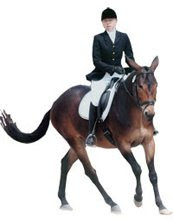
In 1994, the U.S.E.F. passed a rule to permit mules to compete in Endurance and Driving in addition to Dressage. Interestingly, in the Dressage community, a common objection to mules in competition was safety. Perhaps they were concerned that horses would not accept their Longeared partners. Mules can compete in U.S.D.F. competitions, or mule competitions that offer Dressage classes. Christine Duval-Sentry (pictured with Pass the Buck) claims the honor of being the first to compete a mule in a U.S.D.F. competition. Her mount was Pass the Buck and in their first season they won top ribbons, including several first places, competing against horses.
Prepared for a Crowd
By Christine Duval-Sentry, Verona, Wisconsin
I just returned from my first United States Dressage Federation (USDF) horse
show near Chicago, IL. Since it was such a positive experience, I thought I’d share it. I also want to take this opportunity to thank all of the mule enthusiasts who worked so fervently to change the U.S.A. Equestrian/U.S.D.F. rule, which previously prohibited mules from recognized Dressage competition. Your efforts were definitely worth it.
For the past four years Pass the Buck (Buck) and I have trained with Senior Dressage judge and FEI trainer Lois Heyerdahl. We competed regularly at Dressage schooling shows at our local horse show circuit progressing through the levels quite nicely. After a few year-end Grand Championships, however, I became increasingly frustrated that I couldn’t compete with the really serious riders/trainers at the U.S.D.F. sanctioned competitions. It was with great enthusiasm, when I learned that beginning April 1, 2004, mules would be allowed to compete.
It was a bit of an adventure to figure out all of the necessary paperwork in order to show at a recognized competition. I had to join U.S.A. Equestrian and U.S.D.F. and then Buck needed to join to get his “Horse” ID number. We then joined the regional U.S.D.F. affiliate organization. I also needed to find an appropriate horse show for our debut. I selected a two-day Silverwood Dressage show in July because it was close to home.
Silverwood hosts 17 recognized dressage competitions each year, and has earned the reputation of a well-run, competitive event. The classes were expensive and stabling for two nights was as much as I pay for the month in the board. I figure it was about an $800 weekend when you consider membership and entry fees, my day off work, fuel, food and the hotel room. I was told the three judges would be fair, and that was all I could hope for. As a bonus, the other trainer with whom I ride, Liz Lamm, was also going to show her horse that weekend, so I’d have some assistance in understanding the rules, negotiating the show grounds, and coaching in the warm-up.
Buck has been to some big shows, including Bishop, California, but this was a little different, and it was a lot different than our local schooling shows. First, the grounds were intimidating with over 175 stalls, five warm-up arenas and three competition arenas. There were 89 horses registered for the show with more horses there for board and the three-day Dressage clinic. Buck is nearly 17 hands, but these horses were BIG! I saw one lady standing on top of a three-step ladder to barely reach her stirrup iron. I guessed her horse was over 18 hands…and beautiful! Most of the horses were Warmbloods, a few Andalusian/Lusitanos, a handful of Friesians…and one mule.
Several stables had hired crews to groom horses and clean stalls. My mom and Aunt Gayle handled those duties for me. Riders and trainers used walkie-talkies and earpieces in the warm-up arenas so their instructions wouldn’t bother other riders (Liz just shouted at me when I rode by).
I sent a copy of the rule change with my entry and called show management prior to the show. They were delighted to see something different at their show and I think they were even proud I had selected their venue. They warned me ahead of time that I should be prepared for a crowd. They were right. During one test, we filled the bleachers and lined the arena. I heard a guy shout to his friends right before I entered at “A” to trot down the centerline, “The mule is in the arena!! You’ve got to see the mule!! Hurry!!” I was surprised at the number of upper-level riders at the show (very unlike schooling shows). It was exciting to ride in the warm-up. Grand Prix horses would sail by at an extended trot; others were working on their One-Tempi changes (lead changes every stride) or Canter Pirouettes, and on and on. If only Buck could learn those movements by watching! Most of the competitors were very friendly. One guy finished his 3rd-Level Musical Kur on his Friesian stallion and said, “Have a good ride!” as I rode by him in the arena. One woman told me I should plan to qualify and compete in Regionals.
I spoke with the Technical Delegate (a USDF-certified person who enforces the rules and handles complaints) on Sunday afternoon and she reported no one complained about our presence. Most people were just plain curious. One woman even asked if Buck could canter. If I had a nickel for every time someone said, “I never knew mules could do this,” I’d have paid for my weekend.
My goal was to do well enough that the judges would have to place me. I didn’t care what color the ribbon was, I just wanted to know we could hold our own against the toughest competition we’ve ever seen. I entered six classes in the Maiden, Amateur and Open divisions. We were evaluated by two different judges, and our scores were very respectable. Both judges had a lot of positive comments about Buck. I’m happy to report that we placed in all six classes, and even won two blue ribbons! At first, I was nervous the competitors would be insulted when I introduced a mule to their exclusive competition. However, the entire weekend was pure pleasure. I didn’t think much about how all of this was good for mule promotion, etc. but I’m absolutely certain we changed some minds. After all, we came to the show prepared for a crowd.
|
|  | |
| |
| |  | | WHAT'S NEW? | | 
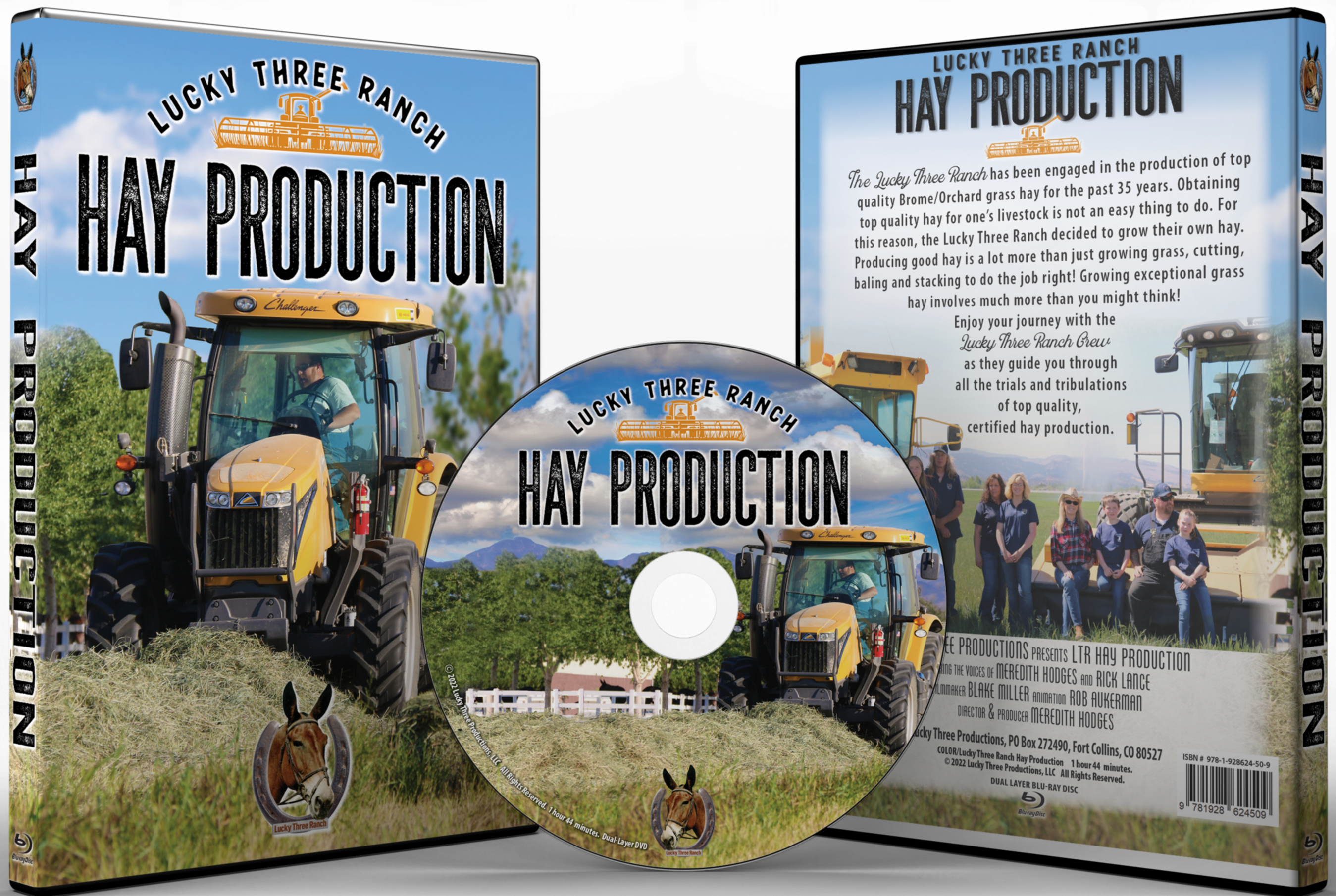
NEW DOCUMENTARY
from
LUCKY THREE PRODUCTIONS, L.L.C.!
AVAILABLE NOW
STREAM ON DEMAND
FREE until the end of July
(use code: “LUCKYTHREEHAY” at checkout)
The Lucky Three Ranch has been engaged in the production of top quality Brome/Orchard grass hay for the past 35 years. Obtaining top quality hay for one's livestock is not an easy thing to do. For this reason, the Lucky Three Ranch
decided to grow their own hay. Producing good hay is a lot more than just growing grass, cutting, baling and stacking to do the job right! Growing exceptional grass hay
involves much more than you might think! Enjoy your journey with the
Lucky Three Ranch Crew as they guide you through all the trials and tribulations of
top-quality, certified hay production.
LUCKY THREE HAY PRODUCTION covers all the details of what goes into producing weed-free, certified grass hay for the equines at the Lucky Three Ranch. Producing top-quality hay is a lot more than just cutting, baling and stacking the grass that grows in the field. This documentary covers everything from irrigation practices, and managing the land to maintaining the equipment, livestock and much more!
The documentary is released as a DVD or STREAM ON DEMAND from our
STORE at www.luckythreeranchstore.com.
This is another Lucky Three Productions, L.L.C. documentary you won’t want to miss!
BIG NEWS
OUR AMAZING DOCUMENTARY
CREATING THE JASPER CAROUSEL
WON A SILVER TELLY AWARD
for
Entertainment Documentary
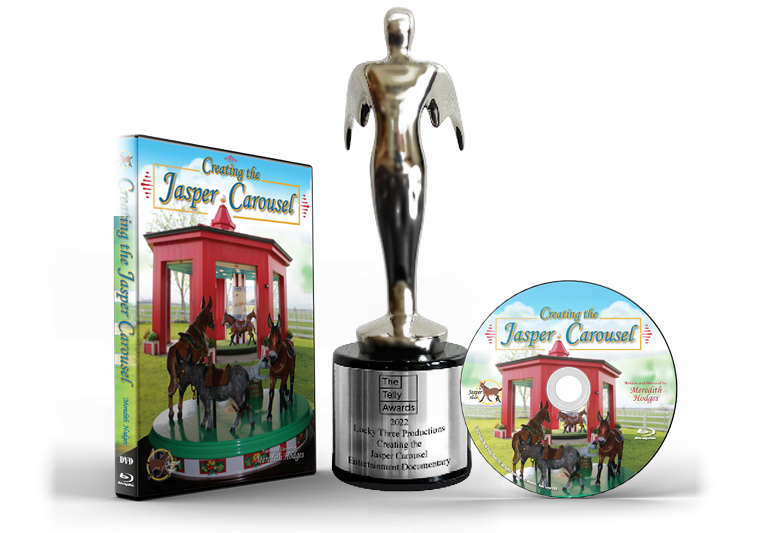
The Lucky Three Ranch
Always Exemplifies Excellence
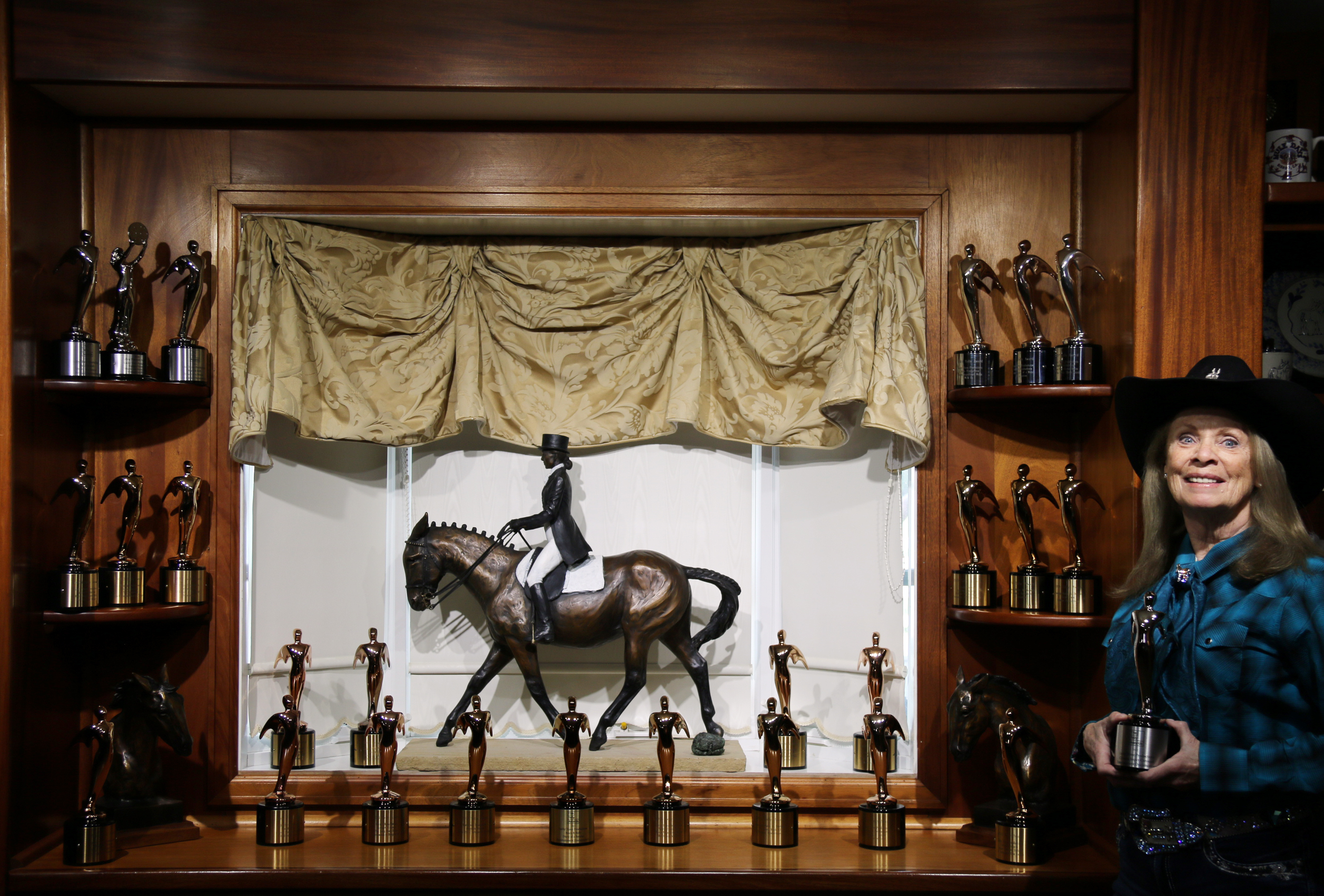
MEREDITH HOLDING HER TELLY AWARD FOR "CREATING THE JASPER CAROUSEL"
ALONG WITH HER PAST TROPHIES!
To celebrate we are giving you a FREE viewing of
this awesome movie during the month of June.
(use code: “JASPER” at checkout)

| |
|  | |
| |
| |  | | | FEATURED PRODUCTS
Jasper and his friends’ adventures are now featured in books, on Meredith’s Video On Demand TV Shows and in a variety of animated videos. In addition to the Lucky Three Ranch website she also designed www.JasperTheMule.com, a website, especially for children that provides a fun, child-friendly environment in which they can learn to appreciate, love and care for equines and all living things.
The passion that Meredith Hodges feels for the equines that she has fought for all her adult life is still as fresh, inspiring and infectious as it was when she first discovered the world of horses, donkeys and mules. She has never wavered in her devotion to them and in her mission to carve a lasting and honored place for them in our world. They are lucky to have her as their champion, but Meredith actually sees it a bit differently. She feels honored and privileged to be a part of their world.
| |
|  | |
| |
| |  |  | | 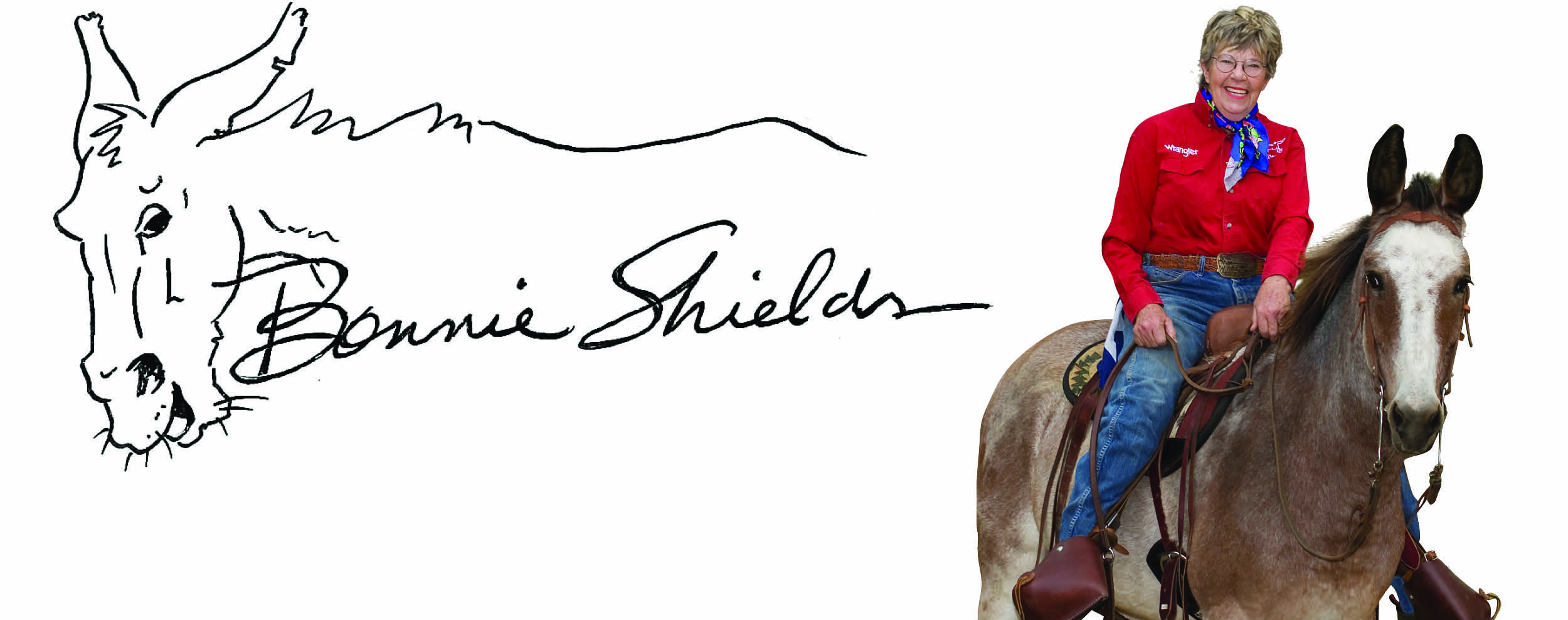 | | | Bonnie’s Bit | | Spring in north Idaho has been highly missing this year. We've even had SNOW once in May! And lots and lots of rain. We woulda "mossed-over" but it was too cold!
As I write this it is GLORIOUS out there and the studio door is open. We may survive.
My knee surgery was delayed today by the news my wonderful surgeon is SICK! It is now set for June 22. Gives me precious time to work on the illustrations for the Bluegrass and Mule Festival this autumn in Tennessee. Always a silver lining, ya know!
So, the MULE ARTIST is busy and grateful for it. I won't be making much "dust" this summer, but just might stay outta debt--if I ride my mule to town instead of my truck. (Don't tell Iris!!)
I most sincerely wish all my mule-thumping buddies and otherwise a safe and happy summer. Hang onto your pocketbooks and indulge in God's beautiful world. America is still the BESTEST and we need to protect our freedom and our honor to remind ourselves, and the world, that doing right is the only way to go.
Kiss a mule! Bonnie
And visit Bonnie's website to find out more
about the Wild and Wonderful World of Bonnie Shields,
Tennessee Mule Artist, Cowboy Cartoonist and True Artist!
|
|  | |
| |
| |  |  | | | |  | | Changing Leads at Hearts & Horses
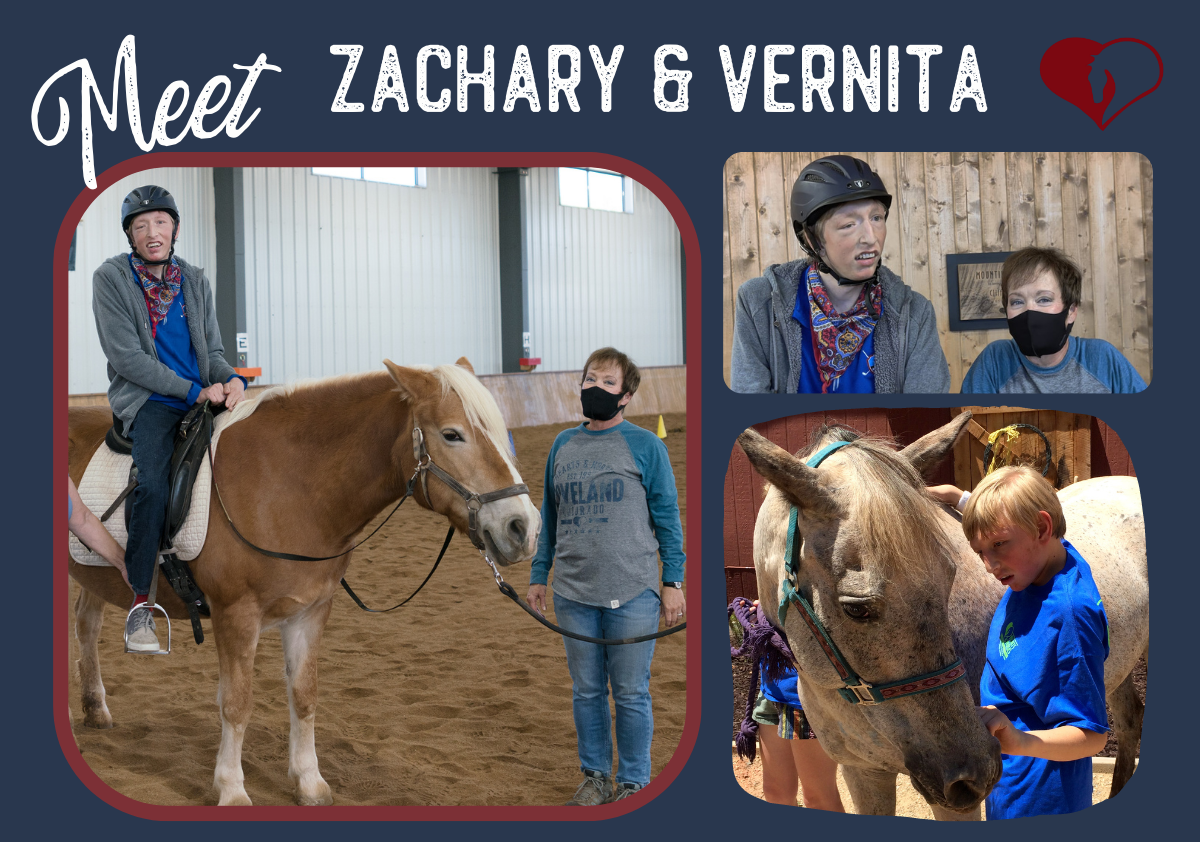
At Hearts & Horses, we strive to create a place for our participants and volunteers to feel a sense of belonging and a home away from home. That is certainly the case for the rider and volunteer duo that we'd like to introduce to you this month! Zachary and Vernita have been paired together ever since Vernita started volunteering at Hearts & Horses in September 2016.
Zachary has a chromosomal deletion that causes him to be unstable on his feet and to communicate through an assistive device. He started riding at Hearts & Horses in 2009, and has had the opportunity to work with several instructors and volunteers. Everywhere Zach goes, he is a bright star of happiness and humor. He thrives in his routines and knows when it’s time to come to the ranch, putting his helmet by the door each week before his session.
Zach is very engaged when it comes to his therapeutic riding. He has an especially strong connection with his horse, Cinnamon Girl or “Cinny” for short. His mom said that “he loves his team but it’s more about his connection with his horse.” Zach’s love for Cinny is very apparent; he constantly strokes her and likes to give her big hugs. If anyone around him, or better yet, Cinny, sneezes it makes Zach laugh out loud. He finds it hilarious when Vernita says “bless you” to her.
When Vernita and her husband retired and moved to Loveland, they were looking for something fulfilling in their new community. When they drove by Hearts & Horses and saw the volunteer sign it piqued their interest. With no horse experience or knowledge of therapeutic riding, they came to us ready to learn all about its impact. It quickly became something Vernita is passionate about and she says that her time at Hearts & Horses, and with Zach specifically, is the highlight of her week. Vernita said, “I can’t imagine doing anything better in retirement!”
Vernita has recognized gradual improvement in Zach over the years and has learned what works well for him. When Zach’s class was an hour long, he would start to get tired during the last 15 minutes, so Vernita and his other sidewalker discovered that using his middle name when referring to him or passing a ball between them perked him up to finish class strong. Zachary’s mom has also seen an improvement in his posture over the last few years. She said: “When he’s riding he is much more upright than he used to be. The team used to have to remind him, but he sits up straight on his own these days.” The physical improvements in Zach’s riding are a huge benefit, but his mom said that what sticks out most to them is that “Zach really feels like he’s a part of Hearts & Horses and is always welcomed by everyone. That makes it special for him because it’s not just about inclusion, it’s about belonging – and he belongs here!”
This sentiment rings true for Vernita as well. When asked about the relationships that she’s built out at the ranch she said that she’s become “close to the other volunteers, instructors, and riders. It's like family. All equal and wonderful.”
That’s why we do what we do, and continue to build upon these relationships between riders and their volunteers, and, of course, their beloved equine partners. It’s a place for all to feel welcomed just the way they are and have the opportunity to learn, grow and be their best selves.
“There’s always hope. Ask for help, even when you think it’s hopeless.”
DONATION FORM
Summer Alameel, Development & Communications Manager
Hearts & Horses - 163 N. CR 29 - Loveland, CO 80537
Phone: (970) 663-4200 x 307 www.HeartsAndHorses.org COVID-19 Updates
Hearts & Horses is a 501(c)(3) non-profit organization and we are proud to be a PATH Intl. Premier Accredited Center
Give the Gift of Joy and Healing
Through an incredible depth and breadth of programming, Hearts & Horses impacts every life we touch. Support the wonderful effects of therapeutic riding for individuals by supporting Hearts & Horses today!
|
|  | |
| |
| |  | 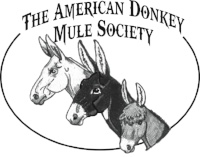 | | | | LEAH’S CORNER
| |
Hello friends, from the depths of the frying pan... Texas is already heating up. Looks like we are going to be in for a rough summer. Heat, flooding, lack of rain, we never know what we are going to get.
Heat can make things miserable for your animals and you. They don't get AC, so make sure they do have a shady spot to escape the worst of the heat. If you have fans in your stables, make sure they are out of reach of curious creatures. Equines have a way of getting into problems without trying! Overhead fans need to be cleaned just as you would your home fan, and anything with a wire needs to have that wire and plug checked regularly.
Longears and horses alike may enjoy a mud bath or a pond to roll in. Don't mind a muddy creature, the mud feels good to them and also acts as a barrier to the flies.
Do check for ticks, lice, mites, hair loss, and any kind of cut on your animals. This year looks like ticks will be bad as well, so fly spray can be a help in that direction too. Also, keep tall grasses cut back if possible. (Yes, beneficial insects such as fireflies need tall grass, but we have to reach a balance.) Snakes also love overgrown lawns, so if you want to keep manicured lawns, leave a patch out in the back 40 for the other wild creatures.
Do your chores early if possible, when the day is (relatively) cooler. Stay hydrated, and do paperwork, inside work during the hotter part of the day. Or take a siesta! Some of those customs DO stand the test of time!
Give your animals and loved ones a hug, and stay cool this summer!

Leah Patton, office manager, ADMS
The Am. Donkey & Mule Soc. | PO Box 1210, Lewisville TX 75067 | (972) 219-0781. | Newsletter: the BRAYER magazine 76+ pgs 6X/yr, $27 US, $37 Canada, $50 overseas. We now accept Paypal, Visa/MC (+$1 courtesy fee appreciated). Reg info, forms, fees on our website at http://www.lovelongears.com/main.htm
|
|  | |
| |
|
| |
|